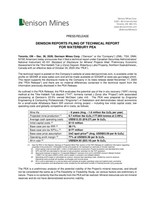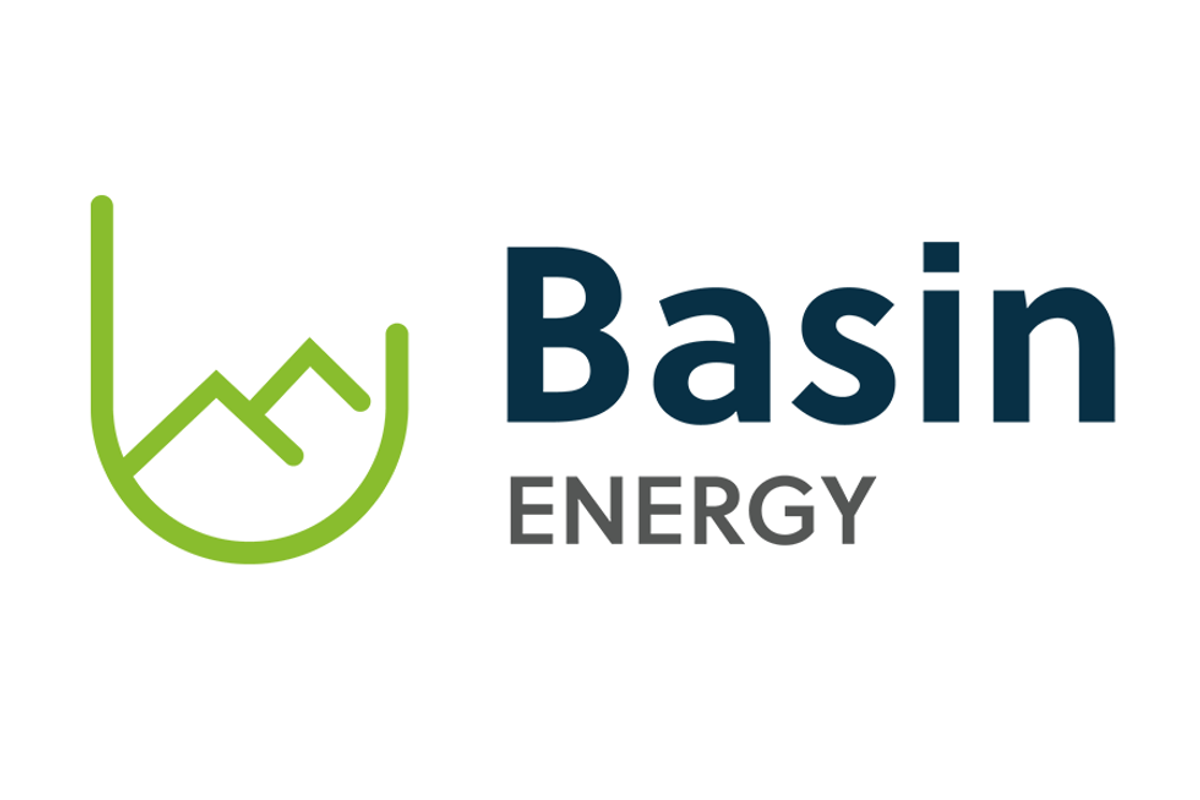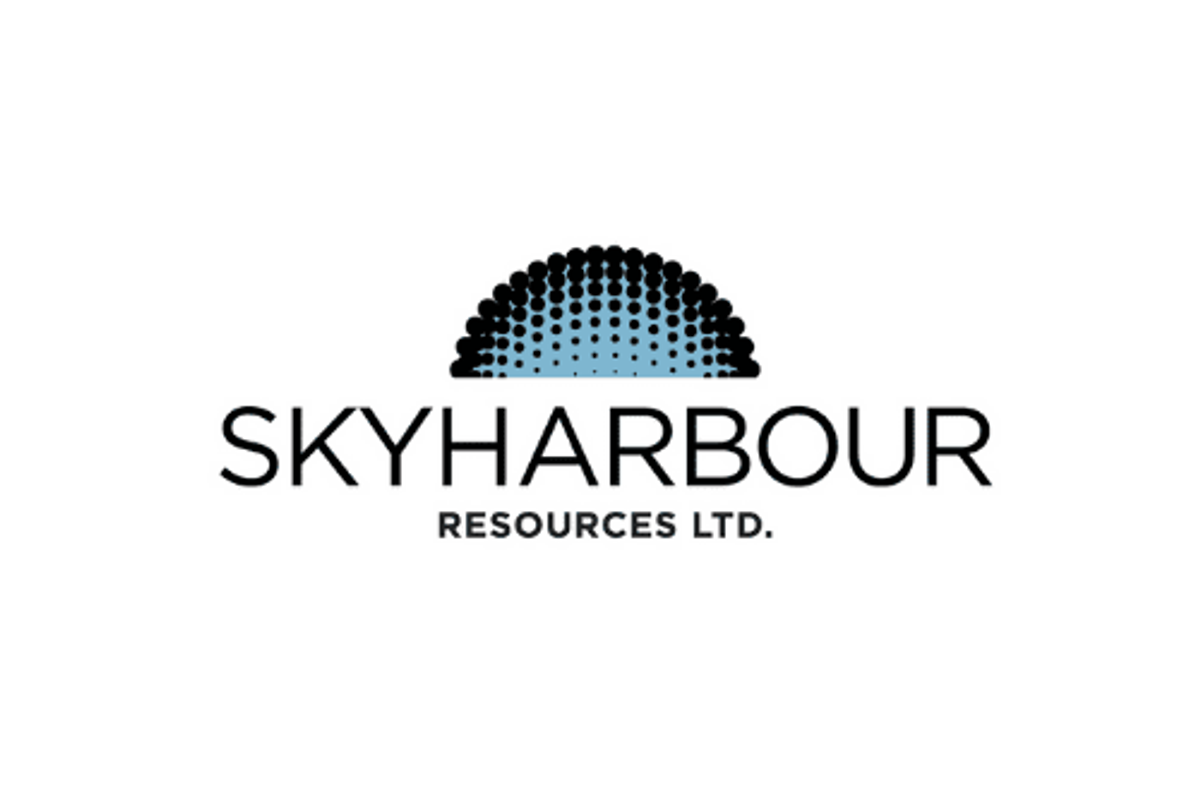Denison Mines Corp. ("Denison" or the "Company") (DML: TSX) (DNN: NYSE American) today announces that it filed a technical report under Canadian Securities Administrators' National Instrument 43-101 Standard of Disclosure for Mineral Projects titled "Preliminary Economic Assessment for the Tthe Heldeth Túé (J Zone) Deposit, Waterbury Lake Property, Northern Saskatchewan, Canada with an effective date of October 30, 2020 (the "PEA"). View PDF version
The technical report is posted on the Company's website at www.denisonmines.com , is available under its profile on SEDAR at www.sedar.com and will be made available on EDGAR at www.sec.gov/edgar.shtml . This report supports the disclosure made by the Company in its news release dated November 17, 2020 (the "PEA Release") and there are no material differences contained in the technical report from the information previously disclosed in the PEA Release.
As outlined in the PEA Release, the PEA evaluates the potential use of the in-situ recovery ("ISR") mining method at the Tthe Heldeth Túé deposit ("THT", formerly named J Zone) (the "Project") with associated processing at Denison's 22.5% owned McClean Lake mill. The PEA was prepared by Engcomp Engineering & Computing Professionals ("Engcomp") of Saskatoon and demonstrates robust economics for a small-scale Athabasca Basin ISR uranium mining project – including low initial capital costs, low operating costs and globally competitive all-in costs, as follows:
| Mine life | ~ 6 years (Avg. ~1.6 million lbs U 3 O 8 per year) |
| Projected mine production (1) | 9.7 million lbs U 3 O 8 (177,664 tonnes at 2.49%) |
| Average cash operating costs | USD$12.23 ($16.27) per lb U 3 O 8 |
| Initial capital costs (2) | $112 million |
| Base case pre-tax IRR (3) | 39.1% |
| Base case pre-tax NPV 8% (3) | $177 million |
| Base case price assumption | UxC spot price (4) (Avg. USD$53.59 per lb U 3 O 8 ) |
| Operating profit margin (5) | 77% at USD$53.59 per lb U 3 O 8 |
| All-in cost (6) | USD$24.93 ($33.16) per lb U 3 O 8 |
| | |
| (1) | See the PEA or the Deposit, Geology & Projected Mine Plan section of the PEA Release for additional information regarding projected mine production. Scheduled tonnes and grade do not represent an estimate of mineral reserves. |
| (2) | Initial capital costs exclude $20.1 million of estimated pre-construction Project evaluation and development costs. |
| (3) | NPV and IRR are calculated to the start of pre-production activities for the THT operation. |
| (4) | Spot price forecast is based on "Composite Midpoint" scenario from UxC's Q3'2020 Uranium Market Outlook ("UMO") for the years 2028 to 2033, and is stated in constant (not-inflated) dollars. |
| (5) | Operating profit margin is calculated as uranium revenue less operating costs, divided by uranium revenue. Operating costs exclude all royalties, surcharges and income taxes. |
| (6) | All-in cost is estimated on a pre-tax basis and includes all project operating costs and capital costs, excluding project evaluation and development costs, divided by the estimated number of finished pounds U 3 O 8 produced. |
The PEA is a preliminary analysis of the potential viability of the Project's mineral resources, and should not be considered the same as a Pre-Feasibility or Feasibility Study, as various factors are preliminary in nature. There is no certainty that the results from the PEA will be realized. Mineral resources are not mineral reserves and do not have demonstrated economic viability.
Preliminary Economic Assessment Highlights
- Selection of ISR mining method potentially unlocks the value of the THT deposit : Following the release of the Wheeler River Pre-Feasibility Study ("Wheeler PFS") in 2018 (see Denison's news release dated September 24, 2018 ) and subsequent studies aimed at increasing confidence in the ISR mining method for Wheeler River's Phoenix uranium deposit ("Phoenix"), including the achievement of "proof of concept" (see Denison's news release dated June 4, 2020 ), Denison evaluated the application of the ISR mining method on the THT deposit. Similar to Phoenix , the THT deposit is an unconformity-related uranium deposit, where the mineralization is interpreted to be situated in permeable ground – expected to allow a mining solution to travel within the mineralized zone. Additionally, the basement rock located below the mineralized zone is interpreted to be highly impermeable and is expected to allow for containment of the mining solution beneath the deposit.
- Freeze Wall design expected to reduce technical risk and upfront capital costs: Full hydraulic containment of the orebody during mining activities has been planned for the Project with the installation of a freeze wall from surface to the basement rocks underlying the THT deposit– effectively creating containment 360 degrees around the deposit. This design makes use of established ground-freezing technology and conventional diamond drilling to create a physical perimeter around the deposit – containing the mining solution used in the ISR mining process and protecting the surrounding environment to minimize environmental impacts of the Project. Several additional containment methodologies were evaluated as part of the Concept Study – including the freeze dome design outlined in the Wheeler PFS. Results of the Concept Study showed that the freeze wall design offered considerably lower technical risk, equal or greater environmental protection, a smaller environmental footprint, sustainability benefits associated with the utilization of drilling techniques conducive to local employment, and improved economic results with significantly lower initial capital costs.
- Existing regional infrastructure offers significant benefit: The Waterbury Lake property is located approximately 15 kilometres from Denison's 22.5% owned McClean Lake uranium mill, in the infrastructure rich eastern portion of the Athabasca Basin region. The PEA assumes the McClean Lake uranium mill will be used to process the Uranium Bearing Solution ("UBS") to be recovered from the ISR wellfield and the nearby Points North Landing ("Points North") facilities will be used for accommodations and other support services. Taken together, this existing regional infrastructure results in a significant reduction in the initial capital costs and operating costs estimated in the PEA.
- Potential to be one of the most environmentally responsible mining operations in the world: The combination of the ISR mining method with a high-grade uranium deposit in the Athabasca Basin region has the potential to result in one of the most environmentally protective mining operations in the world – owing to the small foot print of the operation and its minimal surface disturbances, as well as the fact that there are no tailings expected to be generated and no site water discharge planned. The modelled operation also has access to the Provincial power grid and is not expected to rely on diesel generators for primary power on site. Additionally, the freeze wall design provides for the physical isolation of the ISR mining operation from the surrounding environment, which alleviates the primary environmental concern of conventional ISR mining operations and facilitates a controlled restoration process once mining has been completed.
The PEA is prepared on a Project (100% ownership) and pre-tax basis, as each of the partners to the WLULP are subject to different tax and other obligations. After-tax results attributable to Denison's ownership interest are provided in the PEA Release and the PEA. All amounts are in Canadian dollars unless otherwise noted.
The PEA has been completed in accordance with NI 43-101, Canadian Institute of Mining, Milling and Petroleum (CIM) standards and best practices, as well as other standards such as the AACE Cost Estimation Standards. The PEA is a preliminary analysis of the potential viability of the Project's mineral resources, and should not be considered the same as a Pre-Feasibility or Feasibility Study, as various factors are preliminary in nature. There is no certainty that the results from the PEA will be realized. Mineral resources are not mineral reserves and do not have demonstrated economic viability.
About Waterbury Lake
Waterbury Lake is owned by the Waterbury Lake Uranium Limited Partnership ("WLULP"), of which Denison Waterbury Corp. (a wholly-owned subsidiary of Denison) owns 66.90% and Korea Waterbury Lake Uranium Limited Partnership ("KWULP") owns 33.10%. KWULP is comprised of a consortium of investors, in which Korea Hydro & Nuclear Power ("KHNP") holds a majority position. KHNP is headquartered in Gyeongju, South Korea and is the country's largest electrical power generation company, operating 24 nuclear power reactors and supplying approximately one-quarter of the country's electricity. KHNP is also a significant shareholder in Denison.
About Denison
Denison is a uranium exploration and development company with interests focused in the Athabasca Basin region of northern Saskatchewan, Canada . The Company's flagship project is the 90% owned Wheeler River Uranium Project, which is the largest undeveloped uranium project in the infrastructure rich eastern portion of the Athabasca Basin region of northern Saskatchewan . Denison's interests in Saskatchewan also include a 22.5% ownership interest in the MLJV, which includes several uranium deposits and the McClean Lake uranium mill, which is contracted to process the ore from the Cigar Lake mine under a toll milling agreement, plus a 25.17% interest in the Midwest deposits and a 66.90% interest in the THT and Huskie deposits on the Waterbury Lake property. The Midwest, THT and Huskie deposits are located within 20 kilometres of the McClean Lake mill. In addition, Denison has an extensive portfolio of exploration projects in the Athabasca Basin region.
Denison is engaged in mine decommissioning and environmental services through its Closed Mines group, which manages Denison's Elliot Lake reclamation projects and provides post-closure mine and maintenance services to industry and government clients.
Denison is also the manager of Uranium Participation Corporation, a publicly traded company listed on the TSX under the symbol 'U', which invests in uranium oxide in concentrates and uranium hexafluoride.
Follow Denison on Twitter
@DenisonMinesCo
Qualified Persons
The technical information contained in this release has been reviewed and approved by Mr. David Bronkhorst , P.Eng, Denison's Vice President Operations, who is a Qualified Person in accordance with the requirements of NI 43-101.
Data Verification
For a description of the data verification, assay procedures and the quality assurance program and quality control measures applied by Denison, please see Denison's Annual Information Form dated March 13, 2020 filed under the Company's profile on SEDAR at www.sedar.com .
The Mineral Resource estimates presented in the PEA were independently reviewed and audited for the Tthe Heldeth Túé (J Zone) Deposit and for the Husky Deposit as described in Technical Report.
Further information about the PEA referenced in this news release, including information in respect of data verification, key assumptions, parameters, risks and other factors, can be found in the Technical Report.
Cautionary Statement Regarding Forward-Looking Statements
Certain information contained in this news release constitutes 'forward-looking information', within the meaning of the applicable United States and Canadian legislation concerning the business, operations and financial performance and condition of Denison.
Generally, these forward-looking statements can be identified by the use of forward-looking terminology such as "plans", "expects", "budget", "scheduled", "estimates", "forecasts", "intends", "anticipates", or "believes", or the negatives and / or variations of such words and phrases, or state that certain actions, events or results "may", "could", "would", "might" or "will be taken", "occur", "be achieved" or "has the potential to". In particular, this news release contains forward-looking information pertaining to the results of, and estimates, assumptions and projections provided in the PEA (including the PEA Release's summary thereof), including future development methods and plans, market prices, costs and capital expenditures; the Company's current plans with respect to the development of the Project; the results of, and estimates, assumptions and projections provided in, the Wheeler PFS; the Company's current intentions to evaluate the potential benefits of a freeze wall for use at the Wheeler River Phoenix deposit; assumptions regarding Denison's intentions and ability to continue to advance the Project, including its ability to obtain all necessary regulatory approvals to commence development in accordance with the PEA; Denison's percentage interest in its projects and its agreements with its joint venture partners; and the availability of services to be provided by third parties. Statements relating to "mineral resources" are deemed to be forward-looking information, as they involve the implied assessment that, based on certain estimates and assumptions, the mineral resources described can be profitably produced in the future.
Forward looking statements are based on the opinions and estimates of management as of the date such statements are made, and they are subject to known and unknown risks, uncertainties and other factors that may cause the actual results, level of activity, performance or achievements of Denison to be materially different from those expressed or implied by such forward-looking statements. For example, further studies, including a PFS, may not be undertaken if the results of the PEA are not maintained after further testing; Denison may decide or otherwise be required to discontinue the related work if it is unable to maintain or otherwise secure the necessary resources (such as testing facilities, capital funding, regulatory approvals, etc.) or operations are otherwise affected by COVID-19 and its potentially far-reaching impacts. Denison believes that the expectations reflected in this forward-looking information are reasonable but no assurance can be given that these expectations will prove to be accurate and results may differ materially from those anticipated in this forward-looking information. For a discussion in respect of risks and other factors that could influence forward-looking events, please refer to the factors discussed in Denison's Annual Information Form dated March 13, 2020 or subsequent quarterly financial reports under the heading 'Risk Factors'. These factors are not, and should not be construed as being exhaustive.
Accordingly, readers should not place undue reliance on forward-looking statements. The forward-looking information contained in this news release is expressly qualified by this cautionary statement. Any forward-looking information and the assumptions made with respect thereto speaks only as of the date of this news release. Denison does not undertake any obligation to publicly update or revise any forward-looking information after the date of this news release to conform such information to actual results or to changes in Denison's expectations except as otherwise required by applicable legislation.
Cautionary Note to United States Investors Concerning Estimates of Measured, Indicated and Inferred Mineral Resources and Probable Mineral Reserves: This news release may use the terms 'measured', 'indicated' and 'inferred' mineral resources. United States investors are advised that while such terms have been prepared in accordance with the definition standards on mineral reserves of the Canadian Institute of Mining, Metallurgy and Petroleum referred to in Canadian National Instrument 43-101 Mineral Disclosure Standards ('NI 43-101') and are recognized and required by Canadian regulations, these terms are not defined under Industry Guide 7 under the United States Securities Act and, until recently, have not been permitted to be used in reports and registration statements filed with the United States Securities and Exchange Commission ('SEC'). 'Inferred mineral resources' have a great amount of uncertainty as to their existence, and as to their economic and legal feasibility. It cannot be assumed that all or any part of an inferred mineral resource will ever be upgraded to a higher category. Under Canadian rules, estimates of inferred mineral resources may not form the basis of feasibility or other economic studies. United States investors are cautioned not to assume that all or any part of measured or indicated mineral resources will ever be converted into mineral reserves. United States investors are also cautioned not to assume that all or any part of an inferred mineral resource exists, or is economically or legally mineable. In addition, the terms "mineral reserve", "proven mineral reserve" and "probable mineral reserve" for the purposes of NI 43-101 differ from the definitions and allowable usage in Industry Guide 7. Effective February 2019 , the SEC adopted amendments to its disclosure rules to modernize the mineral property disclosure requirements for issuers whose securities are registered with the SEC under the Exchange Act and as a result, the SEC now recognizes estimates of "measured mineral resources", "indicated mineral resources" and "inferred mineral resources". In addition, the SEC has amended its definitions of "proven mineral reserves" and "probable mineral reserves" to be "substantially similar" to the corresponding definitions under the CIM Standards, as required under NI 43-101. However, information regarding mineral resources or mineral reserves in Denison's disclosure may not be comparable to similar information made public by United States companies.
![]() View original content to download multimedia: https://www.prnewswire.com/news-releases/denison-reports-filing-of-technical-report-for-waterbury-pea-301199529.html
View original content to download multimedia: https://www.prnewswire.com/news-releases/denison-reports-filing-of-technical-report-for-waterbury-pea-301199529.html
SOURCE Denison Mines Corp.

![]() View original content to download multimedia: https://www.newswire.ca/en/releases/archive/December2020/30/c7067.html
View original content to download multimedia: https://www.newswire.ca/en/releases/archive/December2020/30/c7067.html








